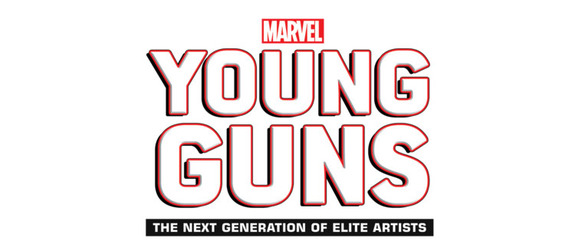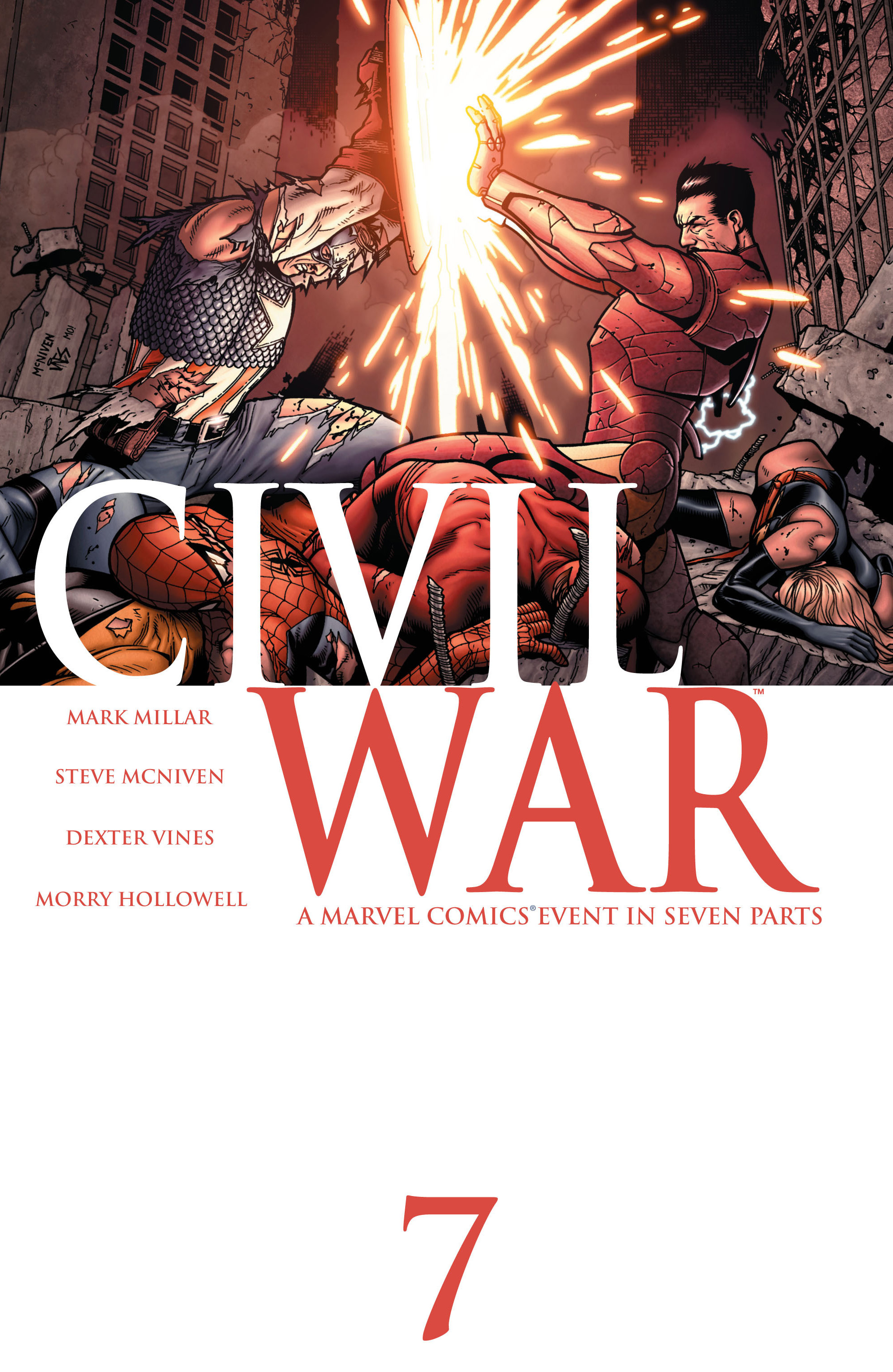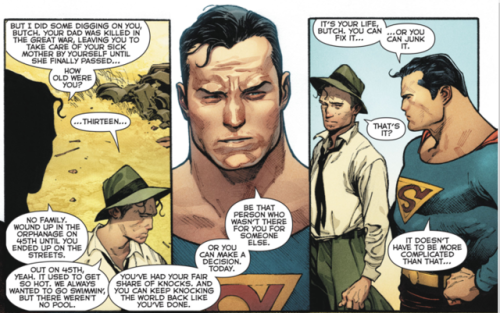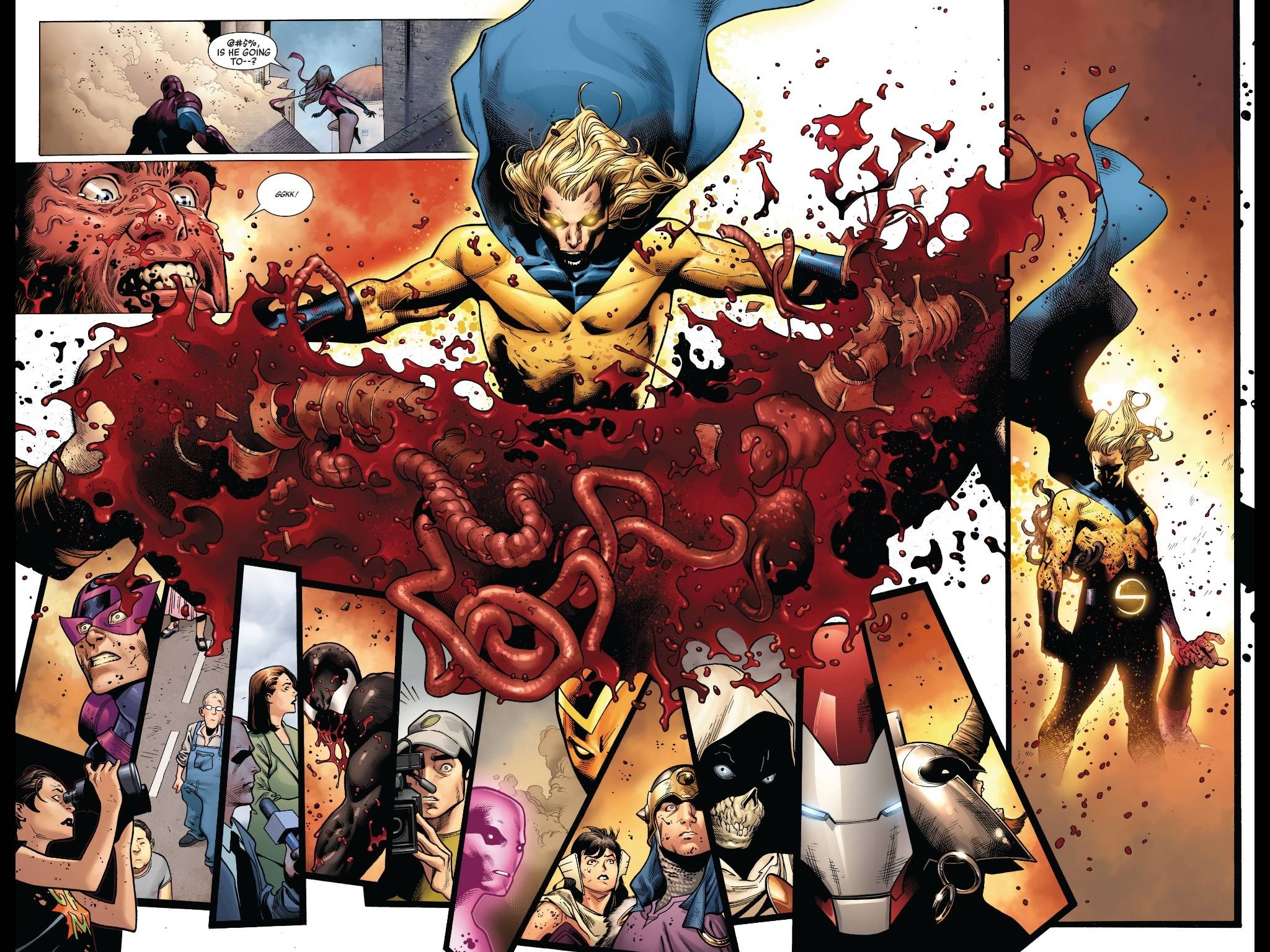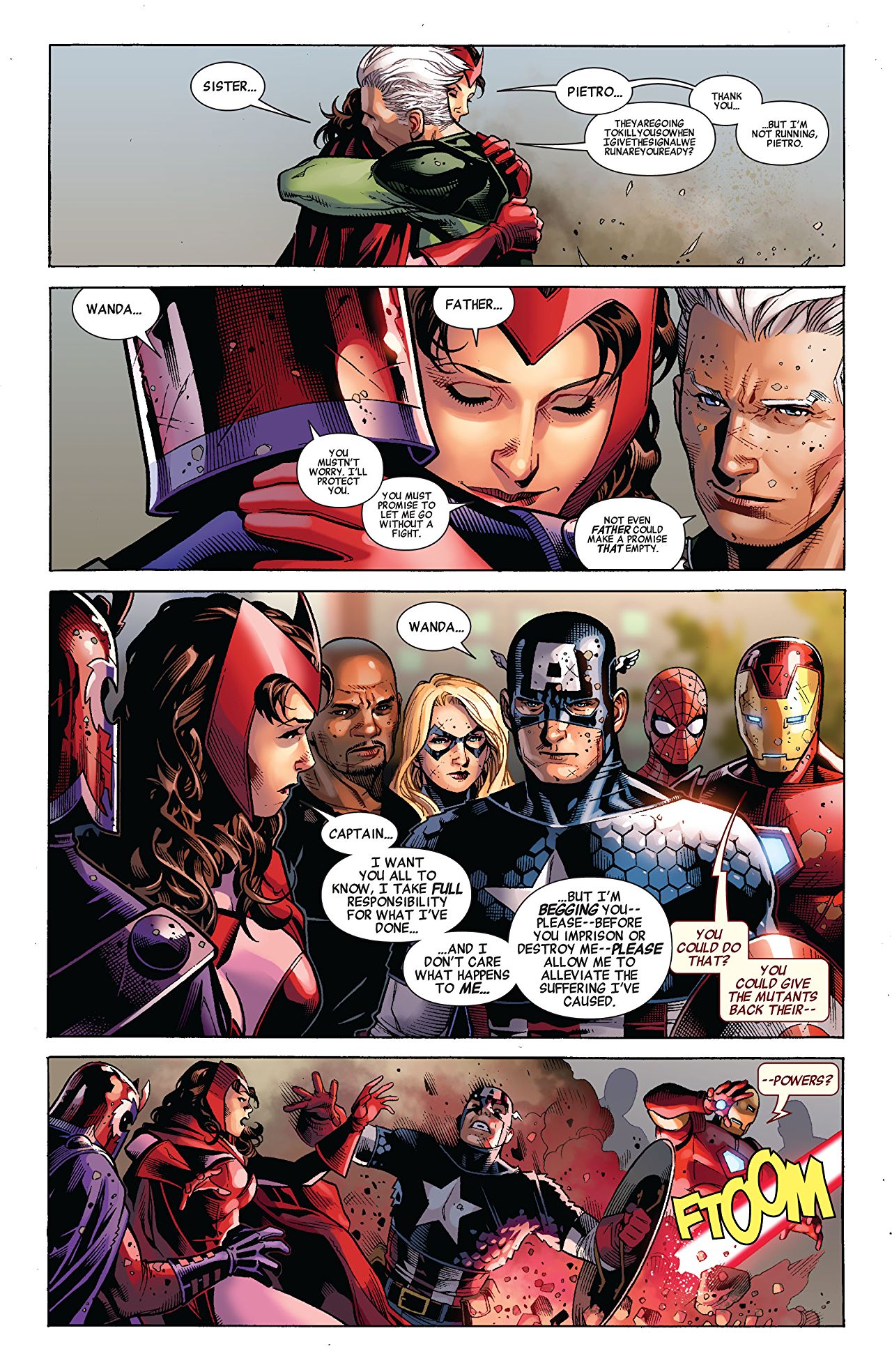This morning while running through the normal websites I check out on the bus (twitter, the Ringer, The Verge, GameSpot, etc.), I came across a pretty cool article on Newsarama that talked about a new old initiative from Marvel.
An initiative called Young Guns.
Marvel is preparing to unveil its next class of Young Guns, the up and coming artists who are set to light the comics world on fire. You might sit there and think it’s hyperbole, but it turns out since the program first started in 2004, Marvel has been… well, kinda right. So let’s take a look back at Marvel’s very first Young Guns. 15 years ago
In 2004 I moved back to the States after spending a year with my mom in South America, just in time to start my freshman year of high school. Shrek 2, Harry Potter and the Prisoner of Azkaban, and Spider-Man 2 were the top 3 grossing films at the box office. Gwen Stefani finally went solo, and Usher had the Billboard’s top song of the year with Yeah, which was weird, because Britney was the one who released the best pop song of the decade.
Yeah I know that’s not super relevant to Marvel’s Young Guns program, but hey, any excuse to talk about Britney, y’know?
Anyways. Marvel was just coming out of a rough couple years. Over saturation of the market in the 90’s was manageable because of a newfound speculator market; Marvel was making more books than ever because people bought them thinking they would be collector’s items. And then they stopped, because it turns out if a book sells 8 million copies, there’s not enough scarcity to make it an investment, it’s just a thing that 8 million other people also own. They filed for Chapter 11 bankruptcy and restructured their entire business model. Fewer books, bigger creators. This started in 1998 with the Marvel Knights line, an imprint that was more experimental with its titles and deemphasized the longwinded continuity Marvel had previously beat to death with things like their Onslaught saga.
The House of Ideas bounced back in the early/mid-2000’s thanks to killer writers like Grant Morrison, Brian Michael Bendis, Warren Ellis, Mike Carey, Brian K. Vaughn, Christopher Priest, Ed Brubaker, and countless others.
And all those writers were complemented with insane visuals by extremely talented artists. Marvel knew they had generational talent draggin’ pencils on paper for them (or stylus’s on Wacom tablets), and even more impressive—they had young generational talent. What seemed like a strictly self-promotion product turned out to be a case of shot-calling that saw Marvel go 6-for-6. So let’s talk about what they were doing then, what their best work is, and what they’re doing now.
Steve McNiven
McNiven is a Canadian comic book artist who cut his teeth on CrossGen’s Meridian title. From there, he garnered Marvel’s attention and was put on Marvel Knights: 4, the imprint’s new Fantastic Four series, where he drew one of my favorite pieces of the Thing… ever.
From there he’d do a few issues for Warren Ellis’ Ultimate Secret miniseries, the middle part of his reimagining of the Galactus story for the Ultimate universe. Afterwards, he’d get to what’s probably still his biggest project to date: Civil War.
In 2018, he completed his most recent project, The Return of Wolverine, bringing back the iconic character he and Charles Soule killed in 2014. Civil War is realistically the thing he’s most known for, but he reunited with writer Mark Millar for fan favorite Old Man Logan, a story that great influenced Fox’s Logan film of 2017.
Olivier Coipel
The first major works I’ve been able to find by Coipel are from one of my favorite series; The Legion of Superheroes, which he worked on with the writing team of Dan Abnett and Andy Lanning in 2001. In 2004 he had a two issue stint on Uncanny X-Men Reload with returning legend Chris Claremont, an attempt to drum up interest in the X-books after the departure of Grant Morrison from their flagship New X-Men title. By 2005 he signed an exclusive contract with Marvel and later that year he produced the first book I’d ever seen of his. A little event book called House of M.
Afterwards, he’d do occasional spot work for random series, usually with high profile authors. His next major book of prominence came in 2007 with J. Michael Straczynski when they were tasked with bringing Thor back to mainstream 616 continuity for the first time since 2004.
In 2010 he’d reunite with Brian Michael Bendis for the four issue event Siege, a story that saw Norman Osborn’s Dark Reign come to a head against the hero community. It was only four issues, which is pretty short by event standards, but they packed a lot of action into each book and set up the publishing initiative “The Age of Heroes” that would guide a majority of Marvel’s books for the next few years.
2018 saw him working on a DC book for the first time in a lifetime, a short story in Action Comics 1000 called The Car, something he worked on with Geoff Johns and Richard Donner.
Most recently, he finished a mini-series with Mark Millar called The Magic Order, an adult themed fantasy comic that’s part of Netflix’s investment in Millar’s brand, giving them first right of refusal to develop tv shows based on his properties. I’m only a few issues in but I like it. It’s nice seeing his pencils with some slightly different coloring techniques than he’s usually associated with.
I’m not sure what his next project is, but I’m gonna snap it up because I love Coipel. The first event I read when I started going to the shop week in and week out was House of M, it started the same month I started going to the store so Coipel is synonymous with my love of the medium. House of M is my favorite and probably still the most important book he’s done (it redefined the X-Men for the next 10+ years), but Siege is probably his biggest book. There’s one two page spread that’s just insane and who am I kidding, of course I’m going to show it to you.
Coipel drew someone ripping a god in half.
David Finch
David Finch started his career with Image and Marc Silvestri’s Top Cow Productions, which makes perfect sense if you’ve ever seen the dude’s pencils. He took over Cyberforce after creator/Top Cow founder Silvestri stepped down from art duties. His first Marvel work is for a book I’ve never read but just added to my reading list called Call of Duty: The Brotherhood. Brotherhood, along with Call of Duty: The Precinct and Call of Duty: The Wagon was conceived of post 9/11 and focuses on a group of firefighters (Wagon focused on EMTs and Precinct on Cops) who start dealing with increasingly more paranormal and supernatural elements of the Marvel Universe.
Sounds weird and I want to read it.
He’d work on Ultimate X-Men in 2003-2004 for an extended period of time and afterwards he’d reunite with Brian Michael Bendis and do the then-unthinkable: kill off the Avengers in Avengers Disassembled.
I was six months or so late to this story but if you’ve read any comic thing on this site before you know how fundamentally important that story is not just to me but to Marvel’s entire creative direction for the rest of the decade. He’d work on the relaunch as well, providing interiors and covers for New Avengers on the opening arc and the third, which was especially cool because it turns out David Finch is really good at drawing ninjas.
In addition to comic work, he did some concept art for Warner Bros. during the pre-production phase for Zack Snyder’s Watchmen film adaptation in 2009 that deserves some recognition. Like that movie or hate it, it looked pretty as hell.
In 2010 Finch would sign an exclusive contract with DC and work on several Batman related projects, before doing what’s probably the biggest book of his career yet. Forever Evil was a 7 issue mini/event series that served as the first event of DC’s new continuity initiative, The New 52.
Most recently he’s done work with DC on Tom King’s Batman run coming out of their Rebirth initiative. His style is gorgeous and he knows how to sell a book with stoic looking characters rocking the cover. I love his World War Hulk covers but it was jarring to see his art on the exterior and John Romita Jr.’s looser, exaggerated pencils on the inside.
While New Avengers is probably my favorite book that he’s worked on, he was the cover artist for Marvel’s Messiah Complex crossover event that dealt with the first Mutant Birth since House of M and I just love those covers.
Uncanny X-Men 493 in particular gets me. I’ve always loved Cable and I’d never seen him vulnerable but terrifying like this before.
He may not have the most prolific career, but he has one of the most detailed careers. Looking over his work now it feels like his work started as an homage to Jim Lee but quickly became a standout artist in his own right.
Trevor Hairsine
Trevor Hairsine is admittedly the artist from this list I’m least familiar with. In looking over his bibliography, I’ve actually read a majority of his Marvel work, but since he’s a British artist I haven’t read any of his 2000AD work on books like Judge Dredd or Missionary Man, so I’m not very familiar with his roots. The books of his I do know however, are fucking bangers.
His first real Marvel story was in 2002 with Jonathan Ney Rieber, working on The Extremists arc of Marvel Knights’ Captain America, a story I read for the first time recently and can say is definitely worth checking out, if nothing else than as an interesting artifact of the time.
A little rougher around the edges than some of the other artists from Young Guns, often compared to fellow Brit Bryan Hitch, Hairsine would go on to work on some majorly high-profile projects for Marvel, especially for its Ultimate imprint, where Hitch was also working at the time. He worked with Warren Ellis on Ultimate Nightmare, the first part of the aforementioned Ultimate Galactus trilogy. He’d also illustrate Bendis’ Ultimate Six story.
One of the more important stories Hairsine was a part of was the X-Men miniseries Deadly Genesis with writer Ed Brubaker. It was my first exposure to his work and while I was new to comics at the time, I was overall pretty impressed with his output. He found a balance between the giant widescreen cinematography of the Ultimate universe with slightly more stylized and exaggerated figures more akin to a traditional 616 book.
Deadly Genesis would introduce Gabriel Summers aka Vulcan, a previously unknown third Summers brother related to Cyclops and Havok of X-Men fame. After he was left for dead by Xavier, Vulcan went to hunt down his father, Corsair, in Shi’ar space in Brubaker’s 12 part Rise and Fall of the Shi’ar Empire in Uncanny X-Men. That would set up two cosmic-centered events down the line called Realm of Kings and War of Kings as galactic empires vied for dominance amongst the stars, but alas, Hairsine would only contribute towards the miniseries that kicked the whole thing off.
More recently, Hairsine had been working on DC’s Red Hood and the Outlaws before the direction change for the series. He was producing some gorgeous stuff like the cover below.
My favorite thing he’s done (for Marvel anyway) is probably Ultimate Nightmare. His cinematic style mixes with Ellis’ razor-sharp script so perfectly—each panel feels like it’s 23 frames shy of being a full on movie. I’d argue that because he only worked on the first part of the Galactus Trilogy, that Ultimate Six is probably his biggest project for the House of Ideas, but I genuinely can’t say since I never finished that series, but I plan to soon.
Adi Granov
Adi Granov is a name you know whether you realize it or not. No single person on this list has been behind a more visible contribution to Marvel at large than Granov and it’s not even close.
Adi Granov was a concept designer for Nintendo on titles like Wave Race: Blue Storm and Bionic Commando. He then began contributing to various Wizards of the Coast card games like Star Wars TCG and Wheel of Time. He eventually got his first comic work for Dreamwave, a publisher renowned for bringing back the Generation One Transformers to print. Unfortunately despite the success of the Transformers license and Adi Granov’s stellar debut with NecroWar (art below), Dreamwave went bankrupt and Granov was a free agent.
After showing his portfolio around, he was approached by Marvel Comics to do a series of pinup posters for Iron Man who, at the time, was a B/C tier character. Nobody gave a shit about him at all (keep in mind, this is 2004), but Granov crushed it and was eventually earned the job for interiors on an upcoming Iron Man reboot with writer Warren Ellis for a little story called Extremis.
Extremis is my favorite thing Granov has worked on, hands down. It was a story that was meant to elevate Tony and adapt him from futurist of the 70’s to inventor of the 21st century. Tony goes up against a villain he didn’t think was possible and he’s scared, so he realizes it’s time to redefine the Iron Man.
The art matches the story perfectly. In 2003 we as an audience were not used to seeing art that looked like this. Granov’s realism reinforced Ellis’ messaging that this was a story from the fucking future. The coloring in particular was tremendous. It was digitally airbrushed but it didn’t have the “polished”, rubbery qualities of most digital inking from the day. Instead of crosshatching the characters to death like a lot of the more prominent artists going into the millennium, Granov instead used gradients as shading, This was something of a paradigm shift for comics and hasn’t really been seen since. When a Granov (along with his fellow Young Guns class and other artists like Bryan Hitch and Steve Epting) book came out, it didn’t feel like like they were producing comic art. It felt like they were producing art.
After that, Granov didn’t produce a lot of interior artwork. He was in high demand as a cover artist however, drawing the fronts of books (gorgeously) for the next few years, but his important work was actually as designer for a 2008 film called Iron Man.
Yeah, that’s right. Granov, along with a few others, designed the beginning of the Marvel Cinematic Universe.
So, in case you were wondering why the suit looked so good in the movie, it’s because they got the guy who made the suit look so good in the comics to design it. There’s a huge cache of various concept art available at Gizmodo that’s more than worth perusing.
In 2008 he’d start a miniseries called Iron Man: Viva Las Vegas with writer Jon Favreau in anticipation of the Iron Man film but it’d never be finished. He’d work on a Captain America series called Captain America: Living Legend with writer Andy Diggle and he’d get credited as a writer as well due to his contributions to the story. It’s hard to find if he’s been doing anything more recent but I’m sure he’s not hurting for work.
Extremis is easily my favorite thing he’s done, but I heavily associate Granov with the X-Men. Like the aforementioned David Finch provided a unifying set of covers for the crossover event Messiah Complex, Granov supplied covers for the final part of the Hope/Messiah trilogy, Second Coming.
Jim Cheung
Jim Cheung has a curious career. He actually started on a few Marvel books in the 90’s, namely ForceWorks, Spider-Man Unlimited, and Marvel Comics Presents, among others. He’d leave for the publisher CrossGen (where fellow Young Gun McNiven began his career) and work on fantasy series Scion with writer Ron Marz, where Cheung illustrated a majority of the series 43 issue run.
Unfortunately, Scion only ever collected the first half of the series and it’s well out of print. So, while I’m unsure about its quality, I’m not that unsure because it turns out Ron Marz is good at writing and Jim Cheung is good at drawing.
After CrossGen’s bankruptcy and subsequent closure, Cheung returned to Marvel, where he was promptly inducted to the Young Guns program just before working on Young Avengers, a book I recently reread and can say holds up like it’s Atlas. It was a team book that had big stakes for new, young characters and it inadvertently brought him closer to Marvel’s core titles that were emerging in the early/mid-2000’s.
It was the first thing of his I ever read and I was immediately hooked. These characters were around my age and seeing a group of friends that looked somewhat like my group of friends all Marvelfied was almost too much for my adolescent heart to take.
Cheung drew 10 of the series’ 12 issues before moving from the orbit of the Marvel Universe’s center to the nucleus of it. New Avengers: Illuminati was a five issue mini-series written by Brian Michael Bendis that detailed the secret history of a clandestine group of Marvel’s most powerful heroes, including Iron Man, Reed Richards, Dr. Strange, Professor Xavier, Blackbolt of the Inhumans, and Prince Namor of Atlantis.
Cheung’s attachment to the project was Marvel’s way of calling him a premiere artist. Bendis was the creative force behind Marvel at the time, one part sherpa, one part architect as he helmed the flagship title New Avengers. He built the Avengers up from a flailing old series into a franchise that spawned multiple spinoff books. Cheung drawing Illuminati in particular was a huge deal as the series detailed the machinations behind some of the Marvel Universe’s biggest stories, and set up several major events, including Secret Invasion.
Years later in 2010, Cheung would return to what’s probably my favorite work of his, Young Avengers: The Children’s Crusade. A sequel to the series he worked on years prior, The Children’s Crusade is a mini-series with more action and crazy plot-twists than the average event. To this day I’m still shocked that Marvel didn’t try to push this book harder and bill it as a major story because there were insane consequences.
Children’s Crusade sort of made itself the end of a trilogy, with Avengers Disassembled/House of M serving as part one, Young Avengers as part two, and Children’s Crusade as part three, and Jim Cheung drew half of that, and drew that half =stunningly.
More recently, Cheung has actually gone to the Darkseid over at DC Comics. Last year I grabbed Justice League 1, a relaunch of DC’s premiere team book courtesy of Scott Snyder, Batman author extraordinaire. Beyond more and more cover work, he’s contributed to two interiors, including the debut of the book. I hope he clears his schedule in the near future, it’d be nice to see him hit a monthly book on schedule. The dude’s a killer artist, I just want to see as much of his work as possible. Judging by the cover below, guy hasn’t missed a step.
So there you have it
Marvel crushed it on their inaugural Young Guns event, at least in my eyes. Not only were these cats putting out quality work before they went to Marvel, they put out career defining work while there, and are pretty much all still making mind-bendingly pretty comics today, with Adi Granov being the only real exception, but that dude was always a concept artist who did comic work, not a comic artist who did concept work.
Obviously I’m a little biased because 2004 was when I first started going to the shop week in and week out. These artists were getting into Marvel right around the time I was, so I definitely feel an attachment to them.
The one problem with them is that their books are either frequently delayed or just outright infrequent. These aren’t just artists, they’re auteurs whose fingerprints are all over multiple decades worth of comics. They take a lot of time to produce a book because they see it in a way only they can. I can see one panel and know which one drew it just based off a jawline, a neck muscle or a lack of one. Marvel knocked it out of the park when they selected this class of Young Guns.
Each one is iconic in their own way, and peerless in most other ways. They’re the artists I think of when I think of comics. The new class has a lot to live up to compared to the program’s alumni, but Marvel hasn’t given me reason to doubt their selection process yet.
Happy 15th to the oldest Young Guns. Comics literally wouldn’t be the same without you.
